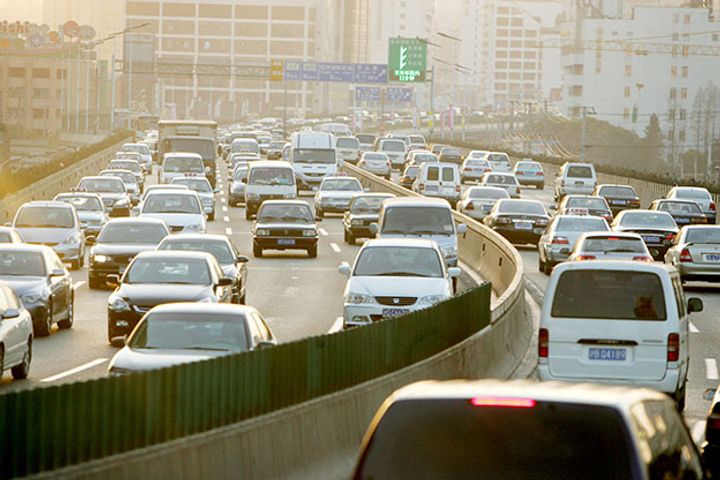 China is Home to Eight Cities With Over Three Million Cars
China is Home to Eight Cities With Over Three Million Cars(Yicai Global) Jan. 16 -- The number of cars in major Chinese cities continues to hit record highs driven by demand among the urban population. Total automobile ownership in the country has reached 240 million and there are eight Chinese cities home to more than three million cars, according to the latest official data.
27 Cities With Over Two Million Cars
Total car ownership rose in the country rose 10.5 percent last year to reach 240 million, according to the latest statistics from China's public security ministry.
The number of cars in eight major cities including Beijing, Chengdu, Chongqing, Shanghai, Suzhou, Zhengzhou, Shenzhen and Xi'an has exceeded three million, while numbers in Tianjin, Wuhan and Dongguan are close to that level too. Some 61 cities across the country have more than one million autos on their roads and 27 cities have more than two million cars.
Car ownership in second-tier cities has increased significantly in recent years, even matching or surpassing those of first-tier cities such as Shanghai, Shenzhen and Guangzhou.
Second-tier cities register higher increases in ownership compared with first-tier cities because of tight license plate restrictions in the latter, which hindered growth. Some first-tier city residents also register their cars in neighboring cities to get around the restrictions, an insider told Yicai Global. Shanghai, Guangzhou and other first-tier cities are home to cars registered in other cities but used locally. Guangzhou has many cars that bear license plates from Dongguan, Qingyuan and Foshan, the insider noted.
Car license plate limits in first-tier tier cities mean that the cities' actual car ownership may be way above the official figures.
Maintenance Cost, Public Transportation Curb Car Demands
The slowdown of car ownership growth in first-tier cities is also related to the rising cost of car maintenance and the increasing convenience of public transportation. The population density of the central areas of Guangzhou, Shenzhen and other first tier cities is very high, so finding a parking space has become a challenge. The cost of car maintenance is high while the public transportation networks of these cities, especially subways, have become well-developed. Traveling by subway in these cities is more convenient than driving, which makes many citizens, especially those living in central areas, choose this mode.
"Cars are now so cheap but many of my friends in Guangzhou have not bought one," a Guangzhou citizen surnamed Li told Yicai Global. "They either take the subway or call a taxi but in my small hometown in eastern Guangdong province, almost every household owns a car because it costs very little."
Demand for cars in first-tier cities has already cooled, Hu Gang, chairman of the South China Urban Research Association and a professor at Jinan University, told Yicai Global. The cost of using a car in Guangzhou is very high, and parking spaces are much more expensive than the car itself, while the city's subway is very convenient, so many people have sold their cars and choose the subway, he said.
Subway networks in many second-tier cities have only just started construction so driving remains the top choice for residents. Xiamen has only one subway line with relatively low coverage and low speeds, so few people take it, a local resident surnamed Cai told Yicai Global. "We are still used to driving, and we don't have to choose homes near metro stops. This is very different from the situation in first-tier cities," he added.
Cars are of practical use in Dongguan and Suzhou where the counties and towns are well developed, said Hu, adding that in cities like Dongguan where many industries and populations are scattered across towns and even villages, traveling without a car would be very inconvenient.